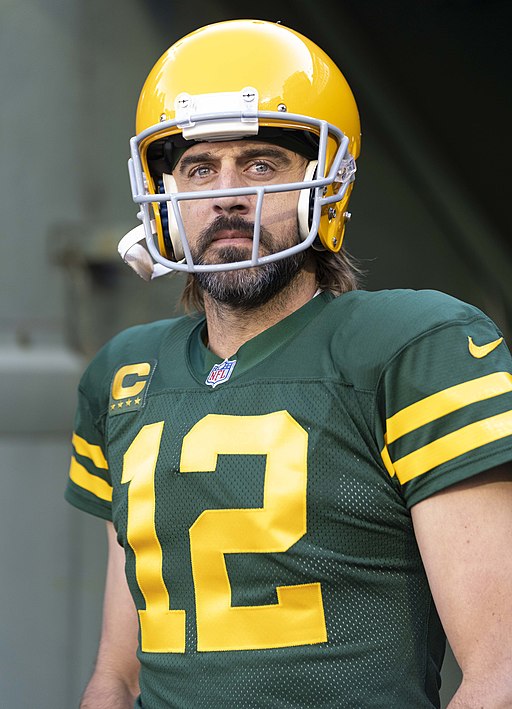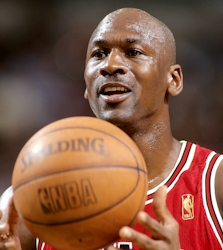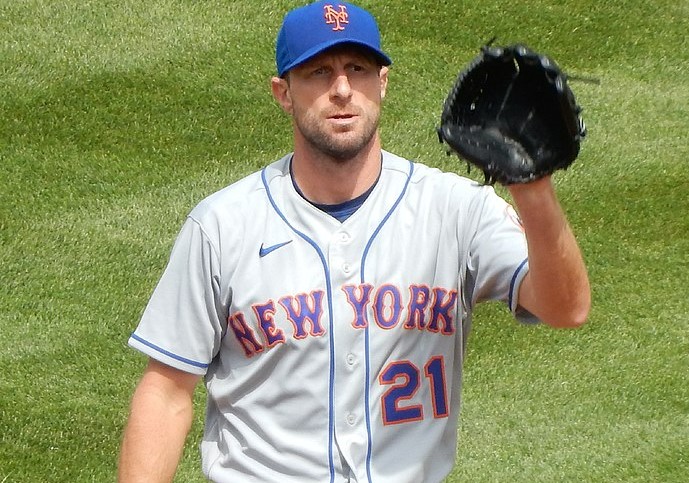Professional sports stars have seen tremendous earnings growth over the past several decades. Where professional major-league athletes once had to work off-season jobs just to make ends meet, their per-season salaries and bonuses now amount to many times what the average American family can expect to earn over the course of a lifetime.
Sports salary inflation since the 1960s has outstripped other measures of inflation by incredible margins. During the same time the consumer price index (CPI) saw an 8-fold increase, the salaries of top-earning professional athletes achieved 500-fold increases (in baseball), 800-fold increases (in ice hockey), and even 1,000-fold increases (in American football).
Over the past months, we have delved into decades’ worth of salary data pertaining to five of the largest major-league sports:
For each sport, the salaries awarded to star players have exploded, rising far beyond median income rates and consumer price inflation measures. Yet the top salary progression of each sport has followed its own unique trajectory. The most recent top salary rates for football, basketball, and baseball are within a few million dollars of each other, while tens of millions of dollars separate the top salaries currently paid in hockey and international soccer from the salaries paid in football, basketball, and baseball.
[Athletes and sports teams might make a fortune. But what about the cities where they play? Find out how sports stadium construction impacts local economies.]
Comparing Today’s Top Salaries Across Major Sports
Internationally, association football (soccer) players reported the most lucrative sports salaries, even though soccer players in America earn far less than top athletes in other sports in the United States. Lionel Messi, playing for Paris Saint-Germain (PSG) in France, earned the equivalent of $75,000,000 in U.S. currency in 2021.

IMAGE SOURCE: All-Pro Reels, Wikimedia Commons, Creative Commons Attribution-Share Alike 2.0 Generic license
Football player Aaron Rodgers was the highest-paid athlete in America in 2022, earning $50,300,000. Among pro basketball players, Stephen Curry commanded the highest salary during the 2021 through 2022 season: $45,780,966. The highest-paid professional baseball player in America in 2022 was Max Scherzer, who earned $43,333,333. Hockey player Erik Karlsson was the highest-paid player in the National Hockey League for the 2021 through 2022 season. However, his $14,500,000 salary amounted to only about a third of what the top-performing players in football, basketball, and baseball earned.
Several factors affect the earnings of top players across different sports: the popularity and profitability of the sports league (in America or worldwide), the number of players needed to make up a team, whether salary caps are in place, etc. Association football (soccer) is much more popular worldwide than it is in the U.S. specifically, which is why the top players for American teams make about 10% of what the best-paid soccer players globally earn. The National Hockey League earns considerably less revenue from television broadcasting compared to comparable major leagues in sports like baseball, American football, and basketball.
Wrapping Your Mind Around the Highest Pro Sports Salaries
The first observation that comes to mind is awe at the sheer size of star athletes’ salaries—not just today but over the past several decades.
Over the course of their entire careers, most working Americans will only earn a tiny fraction of what current star sports players earn in a single season. Depending on their level of education, gender, occupation, and other factors, the average American worker can expect to earn a total of between $800,000 and $3,000,000 during the course of their working lives.
Based on that data, star athletes aren’t just earning many times more than most workers make in a year. During the span of a single sports season, they’re earning 13 times, 16 times, 25 times, or even close to 100 times what most American workers earn over a lifetime. No wonder it’s difficult for the average person to really even conceive of the amount of money paid to their favorite sports stars.
It’s no secret that the earnings of the highest-paid athletes tower over that of ordinary Americans. The top-earning athletes reported salaries that amounted to 235 (hockey), 558 (baseball), 636 (basketball), 666 (football), or even 1,362 (international soccer) times the median family income in America in the early 2020s. What surprised us, though, was not just how much more top athletes earn compared to regular people but for how long this phenomenon has persisted.
Only about one-third of households in America—not individual workers, but whole households where, often, multiple adults work—made $100,000 or more as of 2020, according to Statista. Yet pro sports stars in America have earned $100,000-per-season salaries since the 1960s (and that’s not even adjusting for inflation).
RELATED: What Do Americans Spend the Most Money On?
What makes this decades-long (and still increasing) income gap particularly surprising is how humble the beginnings of professional performance in each of these sports were. Early professional players were lucky to make more than a couple hundred dollars in unadjusted currency—admittedly, a significant amount of money for the time, but nowhere near the excessiveness that characterizes today’s top sports salaries, even after adjusting for inflation. As late as the 1950s and even the early 1960s, players of sports like baseball, basketball, and football still had to work “regular” jobs in the off-season to make ends meet.
Common Turning Points in Pro Athlete Salary History
Looking at the big picture of professional athlete top salary inflation, the most significant turning points have occurred around the 1960s and the 1990s—although salaries have continued their sharp incline in recent years.
The 1960s is when pro sports began to become a more lucrative career—lucrative enough, at least, that the top-paid athletes no longer needed off-season jobs.

IMAGE SOURCE: Wikimedia Commons, public domain
1964 marked the first $50,000 salary in NFL history, paid to Jim Brown. The top salaries awarded in the NHL doubled and even tripled during the 1960s, from earnings in the $20,000 range at the start of the decade to the $43,616 salary paid to Marcel Pronovost for the 1966 through 1967 season and then, for the 1969 through 1970 season, $78,036 (in U.S. currency) paid to Tim Horton. Meanwhile, Willie Mays was making $80,000 playing baseball by 1960. Wilt Chamberlain became the first basketball player to break the $100,000 per year threshold with a three-year contract in 1965. World-famous soccer player Pelé, the highest-paid pro athlete in the world at the time, reported earnings in excess of $200,000 in U.S. currency in 1963.
The salaries of the most sought-after pro athletes continued to rise throughout the subsequent decades. However, a big-picture look at top athletes’ salary increases and how those rising salaries exceeded increases in median household earnings shows that the 1990s saw huge gains in earning potential.

IMAGE SOURCE: Steve Lipofsky—Basketballphoto.com, Wikimedia Commons, Creative Commons Attribution-Share Alike 3.0
Basketball saw the most extreme salary increases during the 1990s, fueled largely by the enormous salaries paid to legends like Magic Johnson and Michael Jordan. Johnson’s $14,660,000 salary for the 1994 through 1995 NBA season (guaranteed even if he did not play due to his illness) amounted to 454 times the median family income that year, and Jordan’s $33,140,000 salary for the 1997 through 1998 season amounted to 852 times the median family income—a financial record that hasn’t yet been surpassed by any NBA player in the three decades since.
While the highest-paid baseball players in 1980 earned 53 times the median family income, they were making more than 200 times what the average family made in the 1990s. The top-earning pro hockey player reported a salary 69 times the median family income in 1989, but by 1997, the highest-paid hockey player made 444 times the median family income.
For some sports, these drastic salary gains continued into the first decade of the new millennium. In football, for example, the best-paid player made 46 times the median family income in 1988, climbing to 102 times by 1999, 362 times by 2002 and 789 times by 2004.
International soccer players’ biggest gains in the rates at which their top salaries compared to the median household income in America wouldn’t emerge until the 2010s. Still, this number grew by healthy gains during the ‘90s and ‘00s decades, climbing from just 2.5 in 1985 to 26 in 1992, 60 in 1995, 106 in 1999, 201 in 2006 and 433 in 2009.
The Higher Pro Sports Salaries Have Risen, the Faster They Have Doubled
Even more surprising than the sheer numbers is the speed at which these massive salaries have doubled and, in some cases, even tripled. You might think that after each major record-breaking salary milestone would come something of a lag period—a time of adjustment during which other top-performing players would see their salaries gradually catch up with that of the record-setter. More often than not, though, each new salary height has given rise to accelerated subsequent salary increases.
Take baseball, for example. Willie Mays was the highest-paid Major League Baseball player in 1960, with a salary of $80,000 in unadjusted currency, but by the end of the decade, his salary had climbed by more than 55% to $125,000. By 1971, the then-best-paid MLB player, Carl Yastrzemski, was earning $166,667—more than double what Mays had been earning just a decade before. By 1977, Mike Schmidt was earning $560,000, or more than three times Yastrzemski’s salary of just six years earlier.
Within just three years, the top MLB salary had climbed from Schmidt’s half a million dollars to Nolan Ryan’s per-season salary of over a million dollars. By 1990, Robin Yount had more than tripled Ryan’s salary from a decade earlier with a salary of $3,200,000. It would only take until 1992 for another baseball star to nearly double Yount’s salary: Bobby Bonilla, earning $6,100,000 in a single season. By 1998, Gary Sheffield had more than doubled Bonilla’s earnings, reporting a per-season salary of $14,936,667. Alex Rodriguez would make more than twice Sheffield’s (unadjusted) 1998 salary by 2009, the year during which he earned $33,000,000 for a single season.
In the 2010s and 2020s, the speed with which star players’ salary increases finally declined. Instead, a greater number of players approached the top tier of pro baseball salaries. The highest-paid MLB player in 2022, Max Scherzer, made $43,333,333—”only” about 30% more than Rodriguez earned back in 2009.

IMAGE SOURCE: slgckgc, Wikimedia Commons, Creative Commons Attribution 2.0 Generic license
Baseball isn’t an outlier in seeing these rapid exponential increases in the salaries of top-earning athletes. In just one decade—the 1990s—the top salary awarded in the National Basketball Association doubled twice (and then some). Patrick Ewing was earning less than $5,000,000 during the 1990 through 1991 season, an amount tripled by Magic Johnson’s 1994 through 1995 salary of $14,660,000. The staggering $33,140,000 salary awarded to Michael Jordan for the 1997 through 1998 season more than doubled Johnson’s already extraordinary earnings of just three years earlier.
Salary Caps Have Had Mixed Impacts on Top Athletes’ Earning Potential
Two of the sports for which we collected data, football and international soccer, either currently have in place or have at one time in history implemented a maximum salary cap. Surprisingly, the salary caps haven’t had the same effect on the salaries of top players.
If salary caps are meant to keep players’ wages down, the efforts may have worked a little too well in the case of association football (soccer). England’s Football Association league adopted a salary cap in the early 1900s that not only kept players’ earnings from spiraling out of control but, at times, left pro soccer players making far less than what the average American family earned. The lifting of those maximum salary caps in 1961 immediately led to much higher salaries for players. In fact, between the end of the salary cap in 1961 and 1968, the highest salary paid to soccer players increased 50-fold, from £20 per week to £1000 per week.
However, the NFL currently has a salary cap—one that hasn’t had the same effect of keeping top-performing players’ salaries low. For the 2022 season, the NFL’s salary cap was $208,200,000, and the highest-paid single player was awarded a salary of $50,300,000.
One reason for the discrepancy in salary cap impact is the difference in how the cap works. The NFL cap, which was enacted in 1994, applies to the salaries paid to the team as a whole, not to individual players. As a result, teams have to make smart, strategic choices to both land the most highly coveted superstars and build an overall solid team that can support the talents of the big names.
Additionally, because all teams have the same salary cap, it evens the playing field between teams with more and fewer financial resources. The inherent nudge toward fairness given by holding every team to the same salary cap even encourages less wealthy teams to spend more than they might otherwise have done, since they can remain competitive against wealthier teams.
Another important distinction is that the NFL team salary cap is tied to the overall league revenue. As interest in the sport increases, so does revenue—in terms of audiences tuning in to broadcasts and engaging with digital media, people buying game tickets and concessions while visiting the stadium in person, and companies sponsoring teams and the league. In turn, the salary cap increases, too. That’s a huge distinction from the per-player cap that had once been imposed on soccer players in England’s Football Association league, which had been painstakingly negotiated through a series of collective bargaining agreements and which didn’t increase automatically or in keeping with league revenue.
[You might not earn what the pros do, but staying fit can actually help your earning power. Find out how.]
Conclusion
You can learn a lot about sports from analyzing the data, and that’s just as true of financial aspects as it is of athletic performance. Looking at star athletes’ salary data also tells us a lot about the economy, finances, and interests of “regular” people. After all, even superstars with salaries that can seem outrageous to the average person are only earning salaries as high as what the market will bear. If the big-name players didn’t bring enough value to the team, the team’s general manager wouldn’t agree to pay their lucrative salaries. Yet top-performing players’ salaries keep trending upward.
Yearly increases in NFL salary caps show definitively that revenue for this league is on the rise, but the high rate of salary growth isn’t exclusive to football. The continually climbing salaries of the top-paid athletes in each sport—and the growing proportion of players who are earning salaries at the top of the income threshold—prove that as high as salary inflation has risen, the potential is there for star player salaries to keep inflating ever higher.
***
Of course, inflation means something entirely different to the average American household. To learn more, jump to our article about how inflation is impacting everyday consumers.
